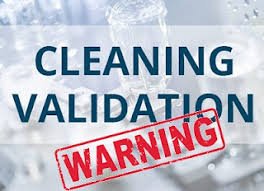Recent Warning Letters Highlighting Cleaning Validation Deficiencies
1. Cosco International, Inc. (April 14, 2025)
-
The FDA required improvements to the cleaning validation program, emphasizing incorporation of worst-case scenarios, such as:
-
Drugs with high toxicity or potency
-
Poor solubility drugs
-
Equipment areas that are difficult to clean
-
Maximum hold times before cleaning
-
2. Granules India Limited (February 26, 2025)
-
The agency demanded:
-
A CAPA plan based on retrospective assessment of the cleaning program
-
Timelines and a detailed summary of vulnerabilities in equipment cleaning lifecycle
-
Enhancements to cleaning effectiveness, ongoing verification, SOP updates, and holistic review of the cleaning strategy
-
3. Rechon Life Science AB (April 30, 2025)
-
Although primarily focused on aseptic processing, the letter reflects FDA’s broader concern for process validation and control, laying groundwork applicable to cleaning validation in sterile contexts
4. Cosmetic Solutions, LLC (May 31, 2024)
-
Criticized for:
-
Not including all products and equipment in cleaning validation (e.g., kettles, fillers, mixers)
-
Using shared equipment for pharmaceutical and non-pharmaceutical products without adequate validation, risking cross-contamination
-
5. Brassica Pharma Pvt. Ltd. (July 11, 2024)
-
Required the firm to implement:
-
Cleaning validation improvements focused on worst-case scenarios
-
Proper change management procedures before using new equipment or products
-
6. Mylan Pharmaceuticals, Inc. (November 9, 2018)
-
Found the cleaning validation and equipment sanitation program to be inadequate, particularly in preventing cross-contamination
Key “Worst-Case” Scenarios Commonly Emphasized by the FDA
Based on multiple warning letters and industry analyses, the FDA expects cleaning validation programs to address these worst-case factors consistently:
| Worst-Case Factor | Description |
|---|---|
| High Toxicity / Potency | Products with higher potential harm or strong activity require stringent cleaning. |
| Low Solubility | APIs that don’t dissolve easily in cleaning solvents can leave residues. |
| Challenging Equipment Surfaces | Hard-to-clean areas or complex design features may harbor contamination. |
| Swab Sampling Sites | Locations most prone to residue build-up must be monitored. |
| Maximum Hold Times | Long intervals before cleaning can increase contamination risk. |
| Scientific Justification | The selected worst-case must be defended with data and rationale. |
Summary & Best Practices to Avoid Warning Letters
-
Comprehensive Cleaning Validation Plans: Protocols must include all products, equipment, and scenarios—not just a subset.
-
Lifecycle Management: Regular review and updating as new products or equipment are introduced.
-
Robust Change Management: Any change in equipment, process, or formulation should trigger revalidation.
-
SOPs and CAPA Systems: Documentation, training, and corrective actions must be in place and up to date.
-
Scientific Rationale: Justify why certain products/equipment are deemed worst case for cleaning validation.
-
Ongoing Verification: Periodic sampling, testing, and trend analysis ensure effectiveness over time.
Final Thoughts
Cleaning validation remains a high inspection focus area for the FDA. Many warning letters underscore that:
-
Partial or poorly justified validation programs are insufficient.
-
Regular revalidation, thorough risk assessment, and documentation are mandatory—not optional.
-
Firms must move beyond compliance check boxing to embedding rigorous, science-based cleaning validation into their quality culture.
🎓 Discover one of the best Pharmaceutical Quality Assurance course available —click below to explore the course that’s shaping future Quality Assurance skills.


